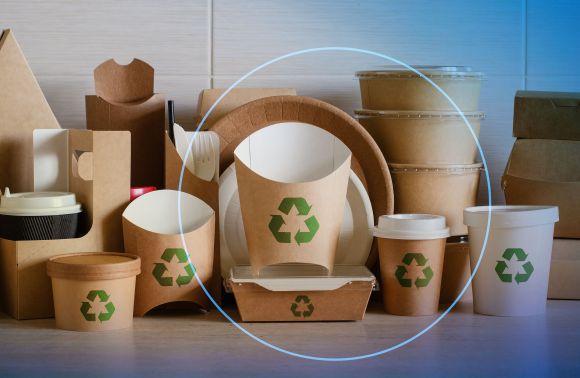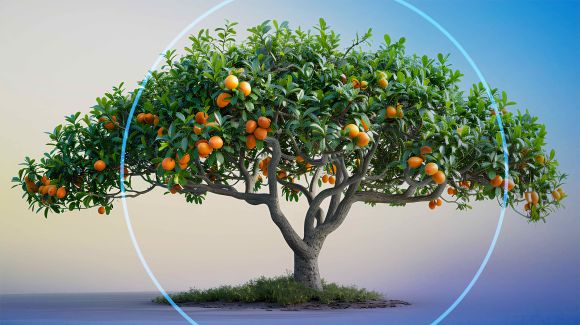The global economy is at a crossroads. Climate change, resource depletion and biodiversity loss threaten traditional business models, while consumers and investors increasingly demand sustainable alternatives. In response, manufacturers are embracing the bioeconomy—an economic system that uses “biological resources to produce essentials like food, energy and materials.”
This emerging approach offers unprecedented opportunities for businesses willing to change. Incorporating circularity—a model that optimizes resource use, minimizes waste and creates value—the circular bioeconomy alone is projected to be worth up to $7.7 trillion globally by 2030, according to the World Business Council for Sustainable Development. But beyond the numbers lies a fundamental shift in how we think about production, consumption and our relationship with nature.
Understanding and transitioning to a bioeconomy is essential for forward-thinking organizations. It’s both a strategic imperative and a pathway to long-term resilience in an increasingly resource-constrained world.
What is the Bioeconomy?
The bioeconomy represents a fundamental reimagining of economic systems, moving away from dependence on fossil fuels and decreasing greenhouse gas emissions. It emphasizes sustainability by harnessing biotechnology, scientific advances and innovation to create environmentally responsible products and processes. Renewable biological resources—plants, animals, microorganisms and biomass—are used to produce food, materials, chemicals, energy and other goods and services.
Key characteristics define this emerging economic model. The bioeconomy:
- Utilizes renewable resources from both land and sea
- Relies heavily on knowledge, science, and technology for value creation
- Actively seeks to minimize environmental impact
- Fosters sustainable growth
This system fundamentally differs from traditional non-renewable dependent economies. Where conventional approaches extract finite resources and generate waste, the bioeconomy decouples economic growth from resource consumption, allowing for circular systems that regenerate and sustain themselves over time.
Bioeconomy: an example
Consider the packaging industry. Increasingly, companies are making biodegradable packaging using renewable resources, like corn starch, wood fiber or sugarcane, instead of traditional petroleum-based materials that harm the environment. In this bioeconomy model, the process could begin with sourcing the corn or wood fibers which are renewable resources.

A company may take crushed corn and convert it into a natural polymer, which can be molded into various products like packaging materials, disposable utensils or even bottles. Or source wood fiber from sustainably managed, certified or controlled forests. By using plants that can be regrown, this bio-based packaging reduces the reliance on fossil fuels, which are limited and harmful to the planet. This method not only minimizes waste but also provides jobs in manufacturing and research.
Moreover, these biodegradable packages break down much more quickly than regular plastics, reducing pollution and helping to keep ecosystems healthy. Overall, this example of the bioeconomy demonstrates how businesses can innovate sustainably while helping to protect nature and reduce waste.
Where biodiversity and business intersect
Biodiversity—the variety of life forms within ecosystems—serves as the foundation for any successful bioeconomy. According to the United Nations, half the world’s gross domestic product is moderately or highly dependent on nature. This dependency creates both risks and opportunities for modern businesses.
A well-designed bioeconomy actively supports and conserves biodiversity through several mechanisms. Maintaining genetic diversity in crops and livestock improves resilience and sustainability in farming systems, as noted by the Food and Agriculture Organization. The approach encourages ecosystem conservation, as many bioeconomy strategies prioritize the health of landscapes and natural resources.
Perhaps most importantly, the bioeconomy creates economic incentives for preservation. Developing products from underutilized species—such as new pharmaceuticals or foods—provides direct financial motivation for ecosystem conservation and sustainable use. The business case extends beyond mere conservation. Companies that engage thoughtfully with nature and work to preserve biodiversity could unlock $10 trillion worth of new business opportunities by 2030, according to the World Economic Forum. Further, WEF projects investing nature-based solutions can lead to an estimated $104 billion in savings by 2030 and as much as $393 billion by 2050. These opportunities span multiple sectors, from sustainable packaging solutions to breakthrough pharmaceutical discoveries.
This alignment of economic and environmental interests represents a fundamental advantage over traditional extractive industries.
The circular bioeconomy advantage
The circular bioeconomy merges bioeconomy principles with circular economy practices, creating loops for biological resources that maximize value, reduce waste and enhance resource efficiency. This integration addresses global challenges, including waste reduction, climate change mitigation, resource scarcity and biodiversity loss.
Circular bioeconomy systems keep natural materials in use as long as possible through reuse, recycling and regeneration. They prioritize designing products for durability and end-of-life recovery, extract value from waste streams by converting agricultural residues into energy or materials and substitute fossil resources with renewable biological alternatives wherever possible.
Industrial symbiosis creates collaborative networks where businesses exchange and optimize by-products, increasing the overall economic value of each input. This approach not only improves competitiveness and profitability but also supports resilience, job creation and long-term sustainable growth.
Sustainable business models in action
Forward-thinking companies across industries are already implementing bioeconomy principles with remarkable results. In agriculture, businesses are developing biofertilizers and biopesticides that reduce reliance on synthetic chemicals while maintaining crop yields. These solutions decrease soil and water pollution—major drivers of biodiversity loss.
The materials sector sees companies creating bioplastics from agricultural waste, reducing dependence on fossil fuels while addressing the global plastic pollution crisis. Energy companies are converting organic waste into biofuels, creating value from materials that would otherwise contribute to landfill problems.
Pharmaceutical companies are exploring biodiversity-rich ecosystems for new drug discoveries, creating economic incentives for habitat preservation. Food companies are developing products from underutilized species, expanding market opportunities while supporting agricultural diversity.
These examples demonstrate how sustainable business practices can simultaneously address environmental challenges and create competitive advantages. Companies implementing these approaches often report improved brand positioning, access to new markets and increased resilience to resource price volatility.
Measuring impact and setting targets
Successful bioeconomy implementation requires robust measurement and monitoring systems. As the European Environment Agency notes, achieving a sustainable bioeconomy necessitates “application of ‘what if’ scenario analyses to assess large-scale environmental effects, and to help anticipate and mitigate risks of unseen trade-offs.”
Here, Dassault Systèmes solutions such as virtual twins of experiences, products and even entire business models can support these efforts.
“Virtual twins provide a holistic view of global interactions and allow navigation across different scales,” said Philippine de T’serclaes, chief sustainability officer at Dassault Systemes. “Powered by contextualized data, they enable organizations to model and simulate from the micro to the macro level with scientific accuracy, helping them understand how each layer affects the larger issue.”
With solutions like the 3DEXPERIENCE platform companies can conduct lifecycle assessments of their products and analyze how their operations interact with and rely on ecosystems. These measurements enable businesses to identify areas where transforming operations could positively impact biodiversity.
Using baseline data, companies can set targets that integrate biodiversity considerations and comply with regulatory requirements. These targets might include resource efficiency metrics, recycling rates, product longevity standards, reparability guides and circular design principles.
Technology plays a crucial role in this measurement process. Advanced analytics platforms enable companies to model every stage of the lifecycle and identify opportunities to reduce harm to biodiversity. Digital supply chain planning and manufacturing optimization tools help reduce environmental footprints while maintaining operational efficiency.
Building tomorrow’s sustainable economy
The bioeconomy represents more than an incremental improvement to existing systems—it offers a fundamental transformation toward sustainability. By integrating renewable biological resources, preserving biodiversity, and implementing circular principles, businesses can create resilient, regenerative economic models.
The transition requires collaboration among all stakeholders. Companies must lead technology development and market transformation, while policymakers create enabling conditions and foster stakeholder coordination. Together, they can accelerate adoption of bioeconomic principles that benefit both business and biodiversity.
“At Dassault Systèmes, our purpose is to harmonize product, nature, and life: a vision that shapes our strategy, drives our innovation, and guides every customer partnership,” de T’Serclaes said. “We strive to make sustainability not just desirable, but achievable, scalable, and profitable.”
The opportunities are substantial, but the window for action is narrowing. Organizations that begin implementing bioeconomy principles today will be best positioned to thrive in tomorrow’s resource-conscious economy. The question isn’t whether the bioeconomy will emerge—it’s whether your organization will lead or follow in this sustainable transformation.

